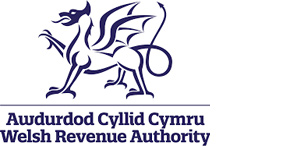Welsh Revenue Authority LTT: Register Your Organisation for Online Land Transaction Tax Filing Guidance
This page provides guidance on how to amend a Land Transaction Tax (LTT) return to correct any mistakes.
- It explains the process for making amendments to submitted LTT returns.
- The page is hosted on the GOV.WALES website, ensuring authoritative information.
- It includes links for both English and Welsh language versions.
- Users can find detailed instructions on the necessary steps to rectify errors in their tax submissions.
- The page is optimised for mobile and handheld devices.

Read the original guidance here:
Welsh Revenue Authority LTT: Register Your Organisation for Online Land Transaction Tax Filing Guidance
Understanding and Amending Land Transaction Tax Returns in Wales
Land Transaction Tax (LTT) is a tax paid on property transactions in Wales. Whether you’re buying a residential or commercial property, understanding how LTT works is essential. Mistakes can happen when filing your LTT return, but knowing how to amend these errors can save you time and potential penalties. This article will guide you through the process of amending an LTT return, ensuring you have the correct information to make necessary changes.
What is Land Transaction Tax?
Land Transaction Tax is the tax you pay when you buy or lease a building or land over a certain price in Wales. It replaced Stamp Duty Land Tax (SDLT) in Wales from 1 April 2018. The amount of LTT you pay depends on the purchase price of the property or land, whether it is for residential or non-residential use, and if you are a first-time buyer.
Residential Property
For residential properties, LTT is calculated based on the price of the property. There are different rates and bands, and the tax is only paid on the portion of the property price that falls within each band. For example, if you buy a house for £300,000, you will pay different rates on different portions of the price.
Non-Residential Property
Non-residential properties, such as commercial buildings or land, have a different set of rates and bands. The calculation is similar to residential properties, but the rates are generally lower.
Common Mistakes in LTT Returns
Filing an LTT return can be complex, and mistakes are not uncommon. Here are some common errors that can occur:
- Incorrect Property Value: Entering the wrong purchase price can lead to an incorrect tax calculation.
- Wrong Property Type: Misclassifying a property as residential or non-residential can affect the tax rate.
- Missed Deadlines: Failing to submit the return on time can result in penalties.
How to Amend an LTT Return
If you discover a mistake in your LTT return, it’s important to amend it as soon as possible. Here’s how you can do it:
Step 1: Identify the Error
First, carefully review your LTT return to identify the specific error. Check all the details, including the property value, type, and any reliefs or exemptions you may have claimed.
Step 2: Gather Necessary Information
Before you amend your return, gather all relevant documents and information. This may include the original return, purchase agreements, and any correspondence with the Welsh Revenue Authority (WRA).
Step 3: Contact the Welsh Revenue Authority
Reach out to the WRA to inform them of the mistake. You can contact them via their website or by phone. They will guide you on the next steps and provide any forms or documentation you need to complete the amendment.
Step 4: Submit the Amended Return
Once you have the necessary information and forms, submit your amended return to the WRA. Ensure that all details are correct and that you have included any additional documentation they may require.
Step 5: Pay Any Additional Tax or Claim a Refund
If the amendment results in additional tax being due, make sure to pay this promptly to avoid penalties. Conversely, if you have overpaid, you can claim a refund from the WRA.
Resources and Support
The Welsh Revenue Authority provides a range of resources and support to help you with your LTT return. You can find detailed guidance on their official website, including information on rates, bands, and how to file your return.
Online Tools
The WRA offers online calculators and tools to help you estimate your LTT liability. These tools can be particularly useful if you’re unsure about the correct amount of tax to pay.
Professional Advice
If you’re struggling with your LTT return, consider seeking professional advice. Tax advisors and solicitors can provide expert guidance and ensure that your return is accurate and compliant with Welsh tax laws.
Conclusion
Amending a Land Transaction Tax return in Wales is a straightforward process if you follow the correct steps. By identifying errors early and working with the Welsh Revenue Authority, you can correct mistakes and avoid potential penalties. Remember to utilise the resources available to you, including the WRA’s website and professional advisors, to ensure your LTT return is accurate and up-to-date.
For more information on Land Transaction Tax and how to amend your return, visit the Welsh Government’s official website.








